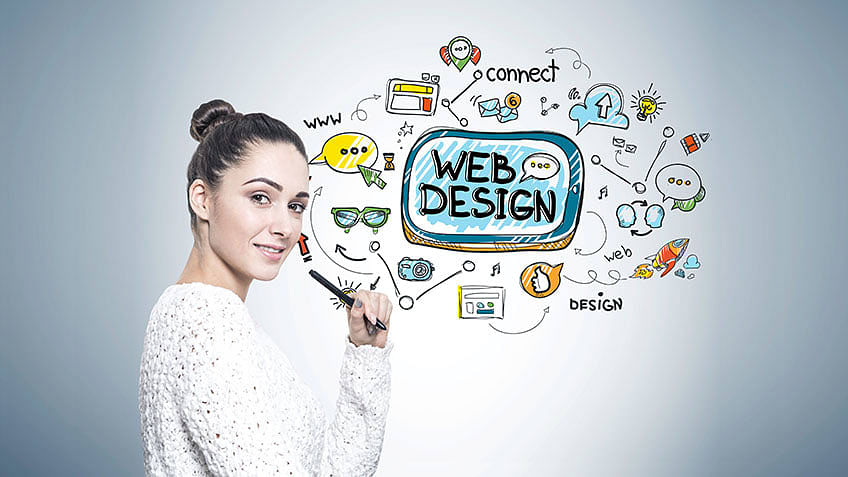A Comprehensive Overview to Crafting Visually Appealing and Functionally Robust Internet Design Solutions
In the ever-evolving landscape of website design, the balance between aesthetic allure and functional honesty continues to be paramount. An extensive understanding of foundational style concepts, together with an eager emphasis on individual experience, can considerably improve the performance of internet solutions. By leveraging components such as color concept and responsive formats, designers are outfitted to create not just aesthetically pleasing user interfaces but additionally ones that promote customer interaction. However, the trip from concept to implementation involves added layers of intricacy that merit exploration, particularly in the worlds of testing and optimization. What techniques can be used to achieve this delicate stability?
Comprehending Style Concepts
Recognizing design principles is essential to developing efficient internet services that involve customers and interact messages clearly. These principles act as the foundation for any type of successful design job, assisting the aesthetic and functional elements of a web site. Trick layout concepts consist of equilibrium, comparison, alignment, repetition, and proximity, each playing a vital duty in developing a natural and cosmetically pleasing format.
Equilibrium involves distributing visual weight uniformly throughout a web page, making sure that no solitary component bewilders the others. Comparison improves readability and accentuates vital features, allowing customers to browse the material effortlessly. Alignment develops order and company, leading the audience's eye in a logical circulation. Repeating reinforces a regular aesthetic language, enhancing brand identity and improving individual familiarity with the interface. Ultimately, closeness teams relevant aspects, aiding individuals rapidly comprehend connections between various pieces of web content.
Relevance of User Experience
Individual experience (UX) is critical in internet design, as it directly affects how site visitors interact with a website and perceive its worth. A well-designed website not only brings in users however additionally maintains them engaged, inevitably resulting in greater conversion rates and customer contentment. UX encompasses various aspects, including usability, availability, and the overall visual allure of the site.

Additionally, favorable user experiences foster brand name loyalty and motivate repeat visits. On the other hand, an inadequate UX can damage a brand name's reputation and prevent potential clients. Spending in UX layout is not just an aesthetic consideration; it is a calculated strategy that can significantly affect a service's lower line. Inevitably, prioritizing user experience in website design is crucial for creating functional, appealing, and effective internet sites that meet the demands of contemporary individuals.
Shade Theory in Website Design
Color theory plays a crucial role in web layout, affecting not just the visual allure of a website but likewise the emotional actions of its customers. link Understanding shade characteristics is necessary for creating an effective user experience. Shades can stimulate specific sensations; for example, blue often conveys count on and professionalism, while red can impart enjoyment or urgency.
Corresponding shades can develop vibrancy, while analogous shades provide an even more serene feel. Using devices like shade wheels can aid in determining reliable color combinations.
Furthermore, social context plays a significant role in color interpretation. While white represents pureness in Western societies, it may represent grieving in some Eastern societies. A detailed understanding of the audience is crucial when using shade concept.
Integrating shade psychology right into internet layout not only enhances aesthetic allure however also affects customer behavior, guiding them towards desired actions. Eventually, a well-thought-out shade approach can dramatically elevate the general influence of a web site.
Receptive and Adaptive Formats
Along with color concept, the framework and layout of a website significantly effect user experience and interaction. web design. Receptive and flexible layouts are necessary techniques for ensuring that sites function successfully throughout a plethora of tools and screen dimensions
Responsive design utilizes fluid grids and flexible photos, enabling the format to adjust effortlessly according to the viewport measurements. This technique makes sure a constant customer experience, as Read Full Report content reflows and resizes, maintaining accessibility whether watched on a mobile phone, tablet computer, or desktop. Media questions play an important duty in responsive layout by applying different designs based on the tool's qualities.

Both techniques intend to improve individual experience by prioritizing usability and ease of access. Choosing in between receptive and adaptive layouts mostly depends on task needs, target audience, and preferred individual interactions, eventually adding to the effectiveness of web layout Find Out More options.
Testing and Optimization Techniques
Testing and optimization techniques are critical parts of reliable website design, making certain that websites not just meet user expectations however likewise perform successfully throughout different platforms. These methodologies include a range of techniques targeted at reviewing functionality, capability, and general efficiency.
A/B testing is a fundamental technique, enabling developers to compare 2 variations of a web page to establish which carries out much better in terms of individual involvement and conversion rates. Customer testing is just as important; it includes collecting comments from actual individuals to identify discomfort points and locations for enhancement. This qualitative information can direct design modifications that enhance customer experience.
Additionally, efficiency optimization strategies such as photo compression, code minification, and leveraging web browser caching can significantly enhance lots times and responsiveness. Tools like Google PageSpeed Insights and GTmetrix supply beneficial metrics for evaluating site performance, allowing designers to make data-driven decisions.
Conclusion
Responsive formats contribute to a smooth user experience throughout devices, further advertising engagement. Inevitably, the application of these strategies not just elevates individual complete satisfaction but likewise drives conversion rates, solidifying the value of a comprehensive design structure.